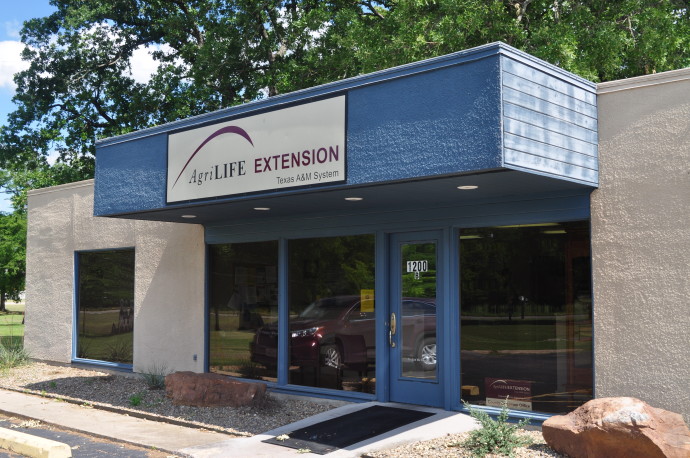The Texas A&M AgriLife Research and Extension Center in Overton will celebrate 50 years serving Texans on July 12.
AgriLife Extension has grown to become a statewide, national and international agricultural education agency over the past 100-plus years. Over the past 50 years, the Overton center has helped guide cattle, forage, ornamental plant and fruit and vegetable production. And AgriLife Extension outreach programs to educate producers and the public about best recommended practices.
AgriLife Extension’s roots grew in Smith County from a single seed – the first agriculture Extension agent in Texas: William C. Stallings – in 1906.
Overton center staff will welcome the public, state and area officials and Texas A&M University System officials to the facility at 1:15 p.m. July 12 for presentations regarding its history and contributions to Texans.
Presentations by staff will be followed by a keynote address from John Sharp, Texas A&M System chancellor, and comments by Dr. Craig Nessler, AgriLife Research director; Dr. Doug Steele, Texas A&M AgriLife Extension Service director, and Dr. Mark Hussey, vice chancellor and dean for College of Agriculture and Life Sciences at Texas A&M University, all from College Station.
A reception will follow the ceremony.
Steele said Stallings laid the groundwork for the evolution of AgriLife Extension and its mission to reach and educate the agricultural public and industry to provide the best, science-based data and recommendations to help them be successful.
“W.C. Stallings represents the genesis for what has become one of the most significant public service initiatives in our nation’s history,” he said. “It’s humbling to think about what he did to turn around production numbers for East Texas farmers at the time and to then multiply the daily impacts AgriLife Extension agents make in the lives of individuals, producers and agricultural industries around Texas more than a century later.”
East Texas, specifically Smith County, was a major hub for agriculture in the late-1800s, according to historical records from the Smith County Historical Society. Smith County was considered a “garden spot,” according to the records. The Cotton Belt Railroad reported the county produced 35 percent of all fruits and vegetables it shipped from Texas.
But agricultural yields dwindled as damage from boll weevils, other pests and diseases began to take their toll on area growers.
Concerned Smith County leaders and members of the Tyler Commercial Club hired Stallings as the first agricultural agent in Texas. He also became the first agricultural agent in the U.S. to serve a single county.
Stallings was credited with turning around farmers’ fortunes. The state quickly began adding agricultural agents and began establishing agricultural experiment stations around Texas to determine best practices based on scientific trials for farmers in their respective regions.
Today, AgriLife Extension includes a network of 13 AgriLife Research and Extension centers and offices in 250 counties staffed by some 900 professional educators who provide expertise in various fields, including soil and animal sciences, plant pathology, entomology, wildlife and fisheries, family and consumer health, economics and 4-H youth development programs.
AgriLife Extension spearheads efforts across Texas to address drought, wildfires, insect and disease outbreaks, as well as provide the latest scientifically supported best recommendations for producers in the full spectrum of farming enterprises, including beef cattle, dairies, poultry, row crops, and fruits and vegetables.
Texans also benefit from AgriLife Extension’s community health and wellness outreach programs regarding diabetes, healthy eating, child safety, food safety and cancer detection.
The economic impact of AgriLife Extension efforts, including saving residents money and creating opportunity for increased earnings or job creation, reaches into the billions of dollars annually, according to AgriLife Extension economic impact briefs.
For example, the economic benefit in net returns from adoption and implementation of selected beef cattle management practices, taught at the Texas A&M Beef Cattle Short Course and Ranch Management University, was $32.1 million in 2015, according to an AgriLife Extension economic impact brief.
But AgriLife Extension impacts are not only monetary.
In 2011, the Plum Creek Watershed became the first watershed in Texas to be removed from the Environmental Protection Agency’s list of impaired water bodies due to watershed improvement efforts spearheaded by AgriLife Extension, community leaders and volunteers, according to Extension impact briefs. AgriLife Extension continues to work in dozens of watersheds to reduce contamination, including high bacteria levels and increase accessibility to clean water for consumption and recreation.






